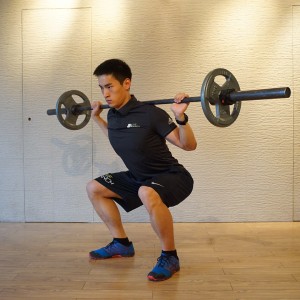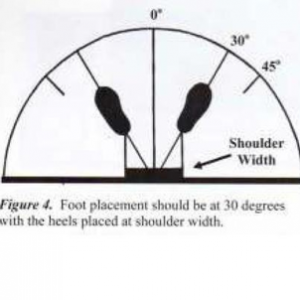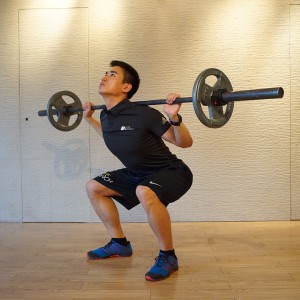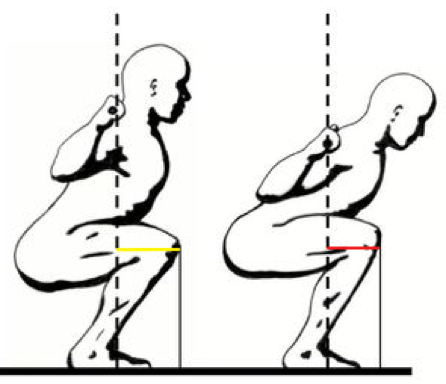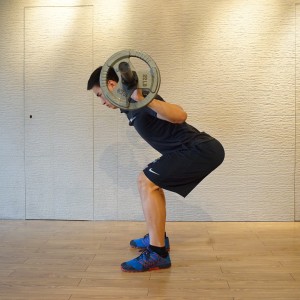I have blogged on multiple occasions the need for everyone to do strength training (here, here, and here), so here is a basic article to get you started on the “King of All Exercises” – the squat (barbell back squat to be exact).
If you’ve never performed a back squat before using a barbell, then please exercise with caution as you do not want to risk injury to your back, neck, knees or anywhere else on your body. Check out this link to prevent your back from getting injured.
When done properly, the squat can not only develop the muscles in your lower body (ie. quadriceps, hamstrings, glutes, calves) but also your core muscles including everyone’s favourite: the abdominals.
So let’s get to it!
1. Bar position:
There are three basic bar positions for the barbell back squat: high bar, low bar, and front. In this article, we will only be introducing the high bar squat. In the high bar squat, the bar is resting on your trapezius (traps) muscle and above your shoulders.
2. Hand and elbow position:
Grip the bar from behind with an overhand grip wherever is most comfortable for your shoulders and elbows. If you’re getting wrist, elbow, or shoulder discomfort, try changing the grip width. Your hands are there to prevent the bar from rolling back.
In general, for the high bar squat, a narrower hand position will help keep your upper back a little tighter and more stable. Your elbows should be pointed downwards and pulled into your sides.
3. Stance Width:
For choosing your stance width, you can just start by standing just wider than your shoulder-width and squat down, see how that feels.
If you have trouble getting low squatting, you may need to take a wider stance and/or point the toes at a wider angle (see point 5 below).
4. Knees Position:
When you squat down,you want your knees to track over your toes. Try not to let them cave inwards as you ascend – keep them over your toes.
5. Foot Position:
Pointing the toes out will help to keep you balanced in your squat and allows for better body mechanics for you to push using higher loads.
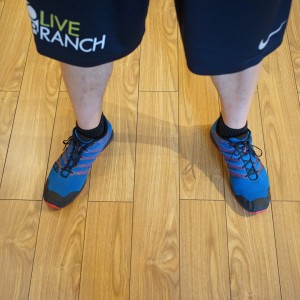
6. Depth:
Descend until your thigh is at least parallel with the floor. You can go a little beyond parallel for maximum range of motion, but there is no need to go all the way to the ground.
7. The Descent
When you squat down, you break at the hip first and push your hips back, as if you were trying to sit on a chair behind you, purposefully allowing your torso to incline quite a bit.
8. The Ascent
As you bottom-out and begin the ascent, it is extremely important that you slow down and come to a gradual stop and very slowly begin the ascent to reduce the compression forces on the spine, knees, and hips as much as possible. The following figures encapsulates the main problems some people have with ascending. Also to keep in mind is to have a tense and strong torso to support the weight.
9. Head Position
When you are performing high bar squats it’s recommended that you look forward or slightly upwards. This will keep you neck in good alignment while reducing the possibility of bending over too much during the squat.
Avoid neck over-extension, not good in your neck!
10. FAQ
Q: It hurts when I place the bar across my traps, what can I do?
A: Make sure that the bar isn’t resting on your neck! (C7 spinous process – the little bony bump at the base of your neck.) When people complain of neck pain when squatting, this is generally the mistake they’re making. If your technique is correct and you are just feeling discomfort, you may need to just spend more time practicing on it so you can get used to it.
Q: Is it okay if my knees go past my toes?
A: A more forward knee bend may increase compressive and shear forces on the knee. However, your tendons, ligaments, and menisci can easily tolerate the forces you place on them in a heavy-loaded squat, so long as you begin your training with light weights and gradually build up to using heavier weights. They will adapt to get stronger in response to training. If you have healthy knees, letting your knees bend past your toes isn’t a big concern.
Q: What if I lean too forward?
A: There may be many reasons why you may be leaning too forward. You may have mobility limitation in your pelvis-hip flexors or below average dorsiflexion in the ankles. Another contributing factor is the length of your femur (thigh bone) may be longer proportionally speaking. Having an increased forward lean may increase pressure in your back and will focus the work to your glutes and hamstrings more than your quadriceps.
You can try stepping on a couple of 5kg plates to raise your heels, or wear proper weight training shoes as they will raised heels built in to the shoes.
Lastly, if you are unsure about any of the form for performing the squat, make sure you ask a trainer who is well-versed in the squat form!
Safety first!
Train hard, train safe!
*** All figures & diagrams were taken from Starting Strength: Basic Barbell Training, 3rd edition by Mark Rippetoe.
